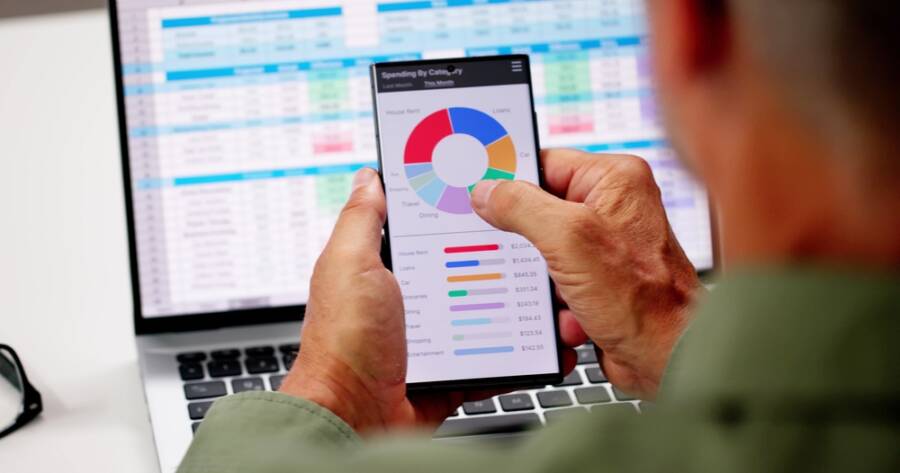Keeping track of your money shouldn’t feel like a full-time job, but with the wrong tools, budgeting can quickly become confusing or overwhelming. That’s why budgeting apps have become go-to solutions for anyone looking to stay on top of their finances, reach savings goals, and avoid that end-of-the-month scramble. But not all apps offer the same level of control, insight, or flexibility—and in 2025, the market is more crowded than ever.
Whether you’re new to budgeting or looking to upgrade your current system, it helps to know which apps offer the best features, the cleanest interfaces, and the smartest integrations. Here’s a breakdown of the top budgeting apps in 2025, including free vs. paid options, ease of use, and how much control they really give you over your money.
YNAB (You Need A Budget): Best for Total Control and Goal Setting
YNAB remains a favorite for serious budgeters who want a hands-on approach and deep financial insight. It’s based on zero-based budgeting, meaning every dollar you earn is assigned a job—from rent to groceries to future vacation funds. YNAB’s strength lies in its flexibility, goal-setting tools, and real-time syncing across devices. It helps you think ahead rather than just track past spending.
The interface is clean but requires a learning curve, especially for those new to proactive budgeting. YNAB is a paid app, currently priced at $99/year, with a 34-day free trial.
Best for: Users who want to plan every dollar and get granular control
Integrations: Bank syncing, shared budgeting with partners, mobile and desktop apps
Free or Paid: Paid only, but often considered worth the cost for long-term planners
Mint (Now Mint by Credit Karma): Best Free All-in-One Tracker
Mint has long been one of the most popular free budgeting apps, and in 2025 it continues to hold strong under the Credit Karma umbrella. It automatically tracks and categorizes transactions from linked bank accounts, credit cards, and loans, giving you a snapshot of your net worth, spending trends, and bills due.
While Mint doesn’t offer zero-based budgeting or the depth of control that YNAB does, it’s ideal for users who want a low-effort, high-visibility solution. It also includes free credit score monitoring, financial goal tracking, and personalized tips.
Best for: Beginners and casual budgeters who want a free, automated tool
Integrations: Broad bank syncing, investment tracking, credit score updates
Free or Paid: Free, with ad-supported financial product suggestions
PocketGuard: Best for Keeping Spending in Check
PocketGuard focuses on one question: “How much do I really have left to spend?” After syncing your accounts and categorizing expenses, it calculates what’s safe to spend after accounting for bills, savings goals, and necessities. It’s great for people who tend to overspend or want a guardrail without having to track every single transaction manually.
The app has a free version, but the paid version (PocketGuard Plus, around $7.99/month or $79.99/year) offers advanced features like custom categories, cash tracking, and exporting data.
Best for: People who need help staying within spending limits
Integrations: Bank account syncing, smart budgeting categories
Free or Paid: Free with optional paid upgrade for more features
Monarch Money: Best for Couples and Shared Budgeting
Monarch Money is one of the newer players in the budgeting app space, but it’s gaining popularity fast thanks to its clean design and strong focus on shared financial planning. It’s ideal for couples or households managing joint expenses, offering collaborative tools, customizable categories, and multi-user syncing.
Monarch lets you track net worth, set goals, and build long-term financial plans, all in a sleek and intuitive interface. It’s a paid app, with plans starting at $14.99/month or $99.99/year, but often includes a free trial.
Best for: Couples or families looking to manage money together
Integrations: Bank and investment syncing, shared accounts, goal setting
Free or Paid: Paid, with a free trial available
Goodbudget: Best for Envelope Budgeting Without Bank Syncing
If you’re into envelope-style budgeting but want to stay away from auto-syncing your bank accounts, Goodbudget is a standout. It’s based on the digital envelope system, where you manually assign money to different spending categories (like groceries or gas) and track expenses yourself. It’s simple, secure, and great for those who prefer a more hands-on, minimalist approach.
The free version limits the number of envelopes and devices you can use, while the paid version ($8/month or $70/year) offers unlimited categories and syncs across multiple devices.
Best for: Manual budgeters and privacy-minded users
Integrations: None required—manual entry only
Free or Paid: Free and paid tiers
Choosing the Right App for Your Financial Style
The best budgeting app is the one that fits how you like to manage your money. If you’re a planner who thrives on structure and forecasting, YNAB or Monarch will give you the most control. If you prefer automation and simplicity, Mint or PocketGuard can give you clear visibility without much input. And if you like keeping things private or old-school, Goodbudget offers structure without syncing your bank data.
Ultimately, a good budgeting app should save you time, reduce financial stress, and help you make smarter decisions. Try a few, test what works for your habits, and find the one that gives you not just control—but confidence.

